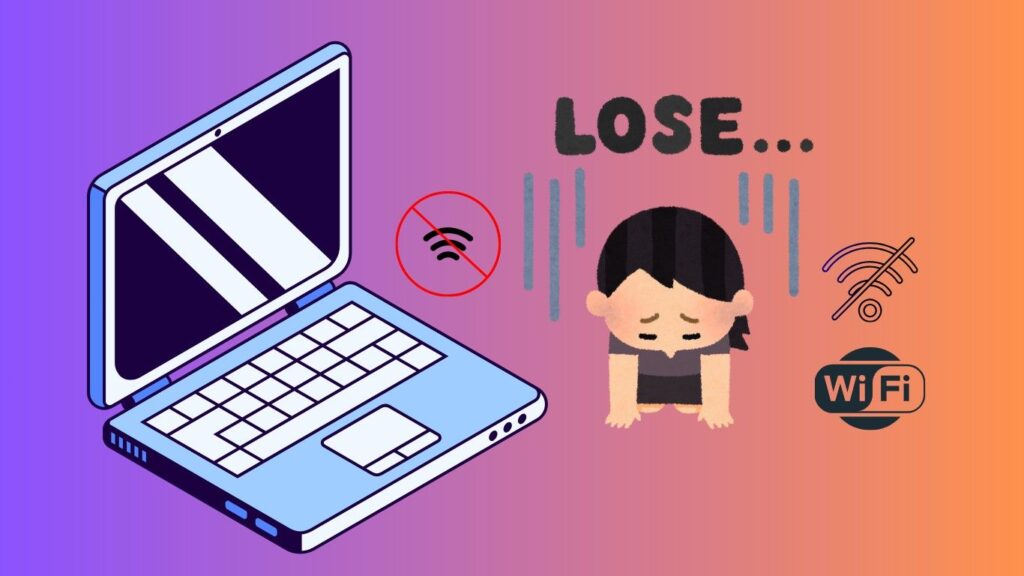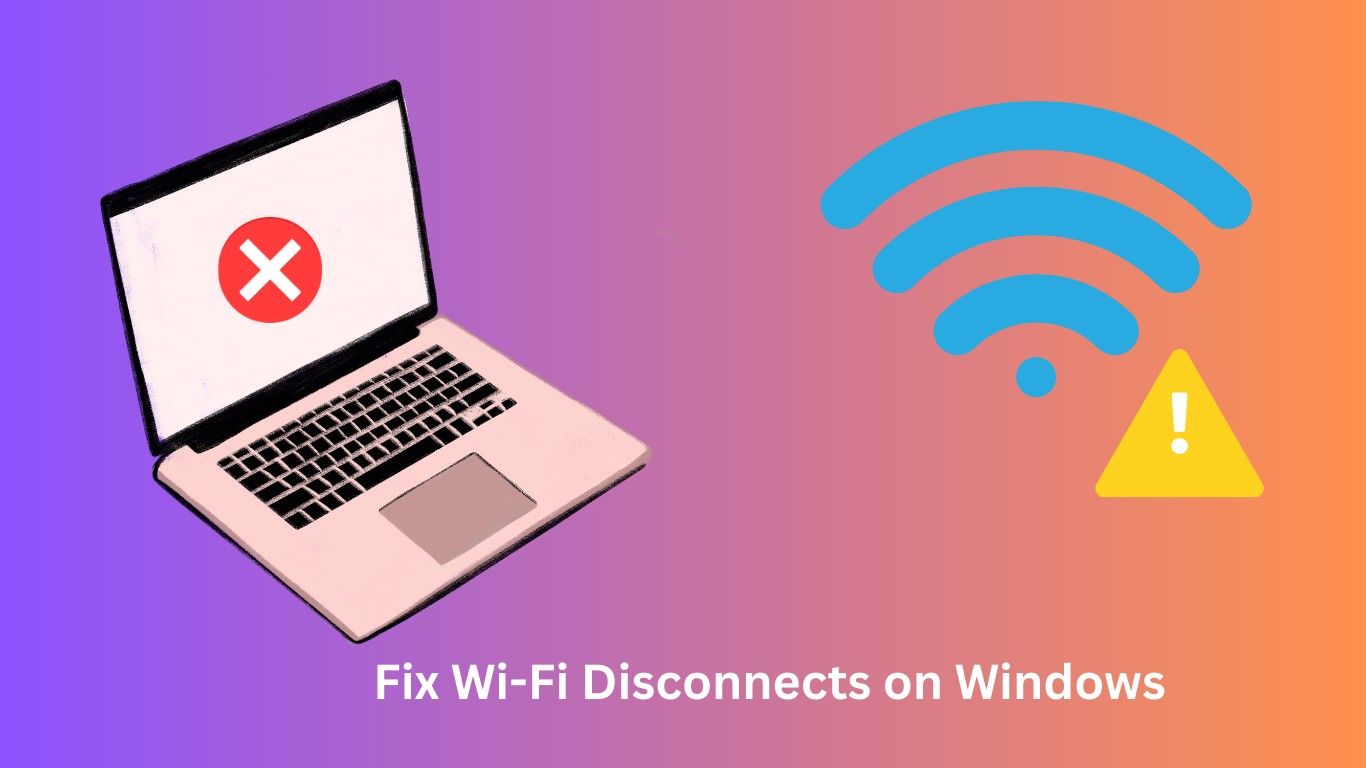How to Fix Wi-Fi Disconnects on Windows Laptops (Step-by-Step Troubleshooting): If you’ve ever been working on an important project or streaming your favorite show and suddenly your Windows laptop loses Wi-Fi connection, you know how frustrating it can be. Wi-Fi disconnects are a common problem, but the good news is you can fix them yourself. In this guide, I’ll walk you through how to Fix Wi-Fi disconnects on Windows laptops, step by step, in a way that’s easy to understand and follow. Think of this as having a friend beside you helping with your laptop issues!
Why Does My Windows Laptop Keep Losing Wi-Fi? | How to Fix Wi-Fi Issues
Before jumping into solutions, it helps to understand why your laptop might be disconnecting from Wi-Fi:
- Outdated or corrupt network drivers – These are the software that help your laptop communicate with your router.
- Power management settings – Windows may turn off your Wi-Fi adapter to save battery.
- Router issues – Sometimes the problem isn’t your laptop at all.
- Interference or weak signals – Devices like microwaves or cordless phones can interfere with Wi-Fi.
- Incorrect network settings – Wrong IP configuration can cause frequent disconnects.
Now that we know the potential causes, let’s go through solutions step by step.
Also Read: How do I find out my WiFi password?
Step 1: Restart Your Laptop and Router
The simplest solution is often the most effective. Restarting can refresh your network connection and fix minor glitches.
- Turn off your laptop completely.
- Power off your router, wait 30 seconds, then turn it back on.
- Turn on your laptop and reconnect to Wi-Fi.
This quick step solves the problem in many cases, especially if your router or laptop has been running for a long time.
Step 2: Update Your Wi-Fi Drivers
Outdated or corrupt drivers can cause your laptop to drop Wi-Fi unexpectedly. Here’s how to fix it:
- Press Windows + X and select Device Manager.
- Expand Network adapters.
- Right-click your Wi-Fi adapter and choose Update driver.
- Select Search automatically for drivers.
- Restart your laptop after updating.
Keeping drivers updated ensures your laptop communicates with your router efficiently and avoids random disconnects.
Step 3: Disable Power Saving for Wi-Fi Adapter
Windows sometimes disables your Wi-Fi to save power, causing sudden disconnects. Here’s how to Fix Wi-Fi:
- Press Windows + X → Device Manager.
- Expand Network adapters and right-click your Wi-Fi adapter → Properties.
- Go to the Power Management tab.
- Uncheck Allow the computer to turn off this device to save power.
- Click OK and restart your laptop.
This ensures your Wi-Fi stays active even when your laptop is conserving energy.
Step 4: Forget and Reconnect to Wi-Fi Network
Sometimes, the saved network profile may have incorrect settings. Resetting it often solves connection issues:
- Click the Wi-Fi icon in the taskbar.
- Select Network & Internet settings → Wi-Fi → Manage known networks.
- Click your network and select Forget.
- Reconnect by entering your Wi-Fi password again.
Step 5: Reset Network Settings
If nothing else works, a full network reset often resolves persistent issues:
- Open Settings → Network & Internet → Status.
- Scroll down and click Network reset.
- Click Reset now and confirm.
- Restart your laptop and reconnect to Wi-Fi.
This step removes all network adapters and reinstalls them, fixing misconfigurations automatically.
Step 6: Check Your Router and Wi-Fi Signal
If your laptop keeps disconnecting, the router or signal could be the culprit:
- Move closer to the router to get a stronger signal.
- Check for interference from other electronic devices.
- Restart your router regularly to maintain stable connections.
- Update your router firmware if available.
Step 7: Advanced Options (Optional)
For tech-savvy users, these extra steps can help:
- Change DNS settings: Use Google DNS (8.8.8.8, 8.8.4.4) to improve stability.
- Disable IPv6: Sometimes IPv6 causes conflicts with Wi-Fi networks.
- Use Command Prompt: Run commands like
ipconfig /releaseandipconfig /renewto refresh network settings.

FAQs About Wi-Fi Disconnects on Windows Laptops
Q1: Why does my Wi-Fi disconnect only on my laptop and not on other devices?
This usually indicates a problem with your laptop’s network adapter, outdated drivers, or power-saving settings. Follow the steps above to fix it.
Q2: How often should I update Wi-Fi drivers?
Check for updates every 2–3 months or whenever Windows notifies you about driver updates.
Q3: Can Windows updates cause Wi-Fi issues?
Yes, sometimes updates change network settings. Updating drivers and resetting network settings usually solves this.
Q4: Does distance from the router affect Wi-Fi stability?
Absolutely. A weak signal can cause disconnects. Try staying closer to the router or using a Wi-Fi extender.
Q5: Will network reset delete saved passwords?
Yes, it removes saved Wi-Fi networks, so you’ll need to reconnect with your passwords.
Q6: How do I fix Wi-Fi disconnection on Windows?
Update your Wi-Fi driver.
Forget and reconnect to the network.
Restart your router and laptop.
Disable Wi-Fi adapter power-saving mode.
Conclusion
Fix Wi-Fi disconnects on Windows laptops are frustrating, but fixing them is usually simpler than it seems. From restarting your devices to updating drivers and adjusting settings, these step-by-step troubleshooting methods can help you enjoy a stable internet connection. Remember, it’s all about methodically ruling out the problem until your Wi-Fi stays strong.
By following this guide, you’ll not only fix Wi-Fi issues but also gain a better understanding of how your Windows laptop handles network connections. Consider this your home-friendly guide to staying connected without stress!
Also Read:
